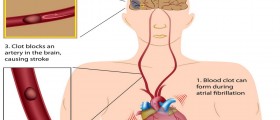The Heart
The heart is the central part of the circulatory system and it represents a myogenic muscular organ responsible for pumping blood throughout the blood vessels. The organ is made of cardiac muscle, an involuntary striated muscle tissue that is only found in this particular organ and is also present in connective tissue. It is confirmed that the average human heart (that normally has 72 beats per minute) will beat approximately 2.5 billion times during the average 66 year lifespan. The heart weights approximately 250-300 grams in females and between 300 and 350 grams in men.

Hoe does the Heart Work?
The heart can be imagined as a pump and blood vessels in such case represent the pipelines laid out throughout the body. This particular pumping system allows each and every cell to be well supplied with oxygen and all the essential nutrients.
It may sound amazing but after around 21 days following the conception the heart starts beating at a rate the is close to mother's heart rate.
Human heart comprises of four chambers, two atria and two ventricles. Each side (right and left) of the heart contains one atrium and one ventricle. The right side of the heart is in charge with collecting the blood from the entire body and sending it to the lungs where it is being oxygenated while left side of the heart receives oxygenated blood from the lungs and distributes this blood to each and every cell in the body.
Blood collected from the body in the right atrium enters the right ventricle via the tricuspid valve. It is then transferred into the lungs with the assistance of the pulmonary artery. Once the blood is enriched with oxygen it is transported to the left atrium via the pulmonary vein. From the left atrium blood enters the left ventricle through the mitral valve and eventually enters the aorta through the aortic semilunar valve. The aorta forks into smaller branches and they provide with blood supply to all the organs and organ systems in the body.
It is essential to mention that when the ventricles of the heart contract the atria are relaxed and opposite.
The heart also supplies itself with the blood. The blood necessary for proper functioning of the heart is transported via coronary arteries. There are two coronary arteries, the left and the right coronary artery. While the right coronary artery supplies the right ventricle of the heart the left coronary artery is in charge with blood supply of the rest of the heart.
- www.cdc.gov/ncbddd/heartdefects/howtheheartworks.html
- medlineplus.gov/ency/article/003003.htm
- Photo courtesy of The Public Domain Review by Flickr: https://www.flickr.com/photos/publicdomainreview/20436416384/

















Your thoughts on this
Loading...